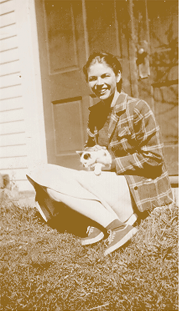Louis Slobodkin, Sculptor and Storyteller
 Thursday, November 21, 2013 at 2:39PM
Thursday, November 21, 2013 at 2:39PM Another repost from a an old series of posts on a few of the author/illustrators of classic children’s literature.

Louis Slobodkin was the illustrator of one of my favorite children’s books, The Hundred Dresses by Eleanor Estes. Before he was an illustrator of children’s books, Slobodkin was a sculptor.
His statue of the young Abe Lincoln (right) was done for the 1939 New York World’s Fair, but it was never exhibited there. Instead,
when the Slobodkins arrived at the Fair on opening day to inspect the installation, they were informed by a doorman: “‘Taint here any more.” The shocking word quickly went round that workmen had demolished the statue on order of Theodore Hayes, Executive Assistant to the Federal Commissioner for the World’s Fair, Edward Flynn. Five days later, Slobodkin told The New York Times that, according to a source in Washington, his sculpture had indeed been set upon with sledgehammers, reportedly because a lady who “lunched with Flynn” had not found it to be in “good taste.” (source)
It’s hard for me to imagine, looking back, what it was about Slobodkin’s young Abe that the woman found not in good taste. What could it be? That it was a bit exaggerated, and not entirely realistic? And why would anyone think it was a good idea to destroy it? I feel better knowing that the destruction of the Rail Joiner caused plenty of controversy, even drawing Eleanor Roosevelt, who was disheartened by what happened to the statue, into the fray.





